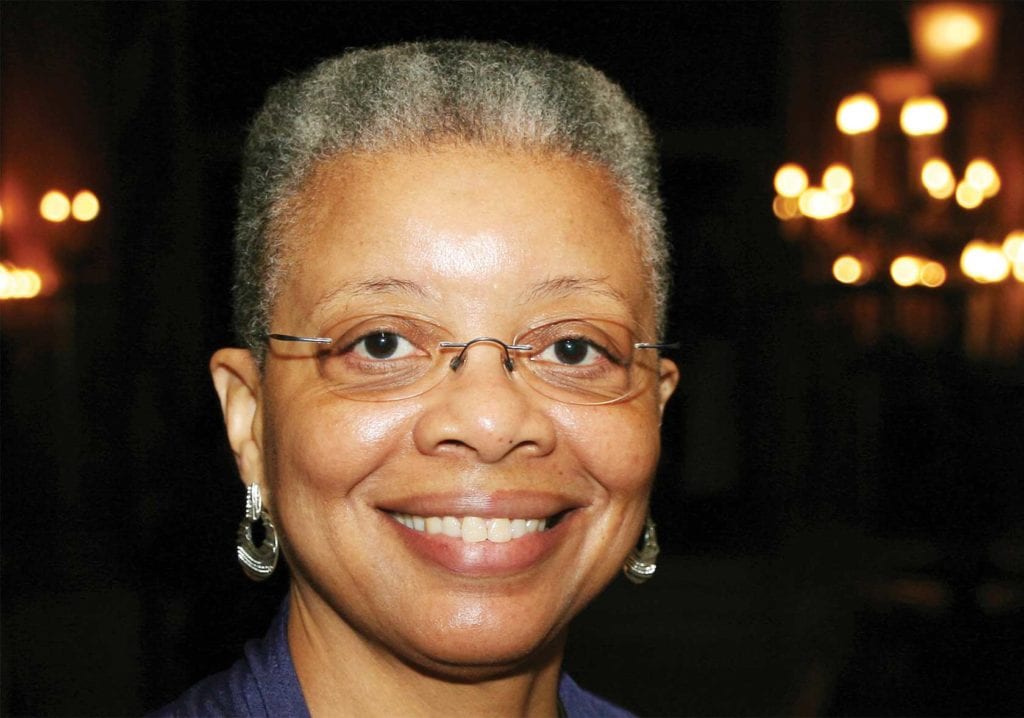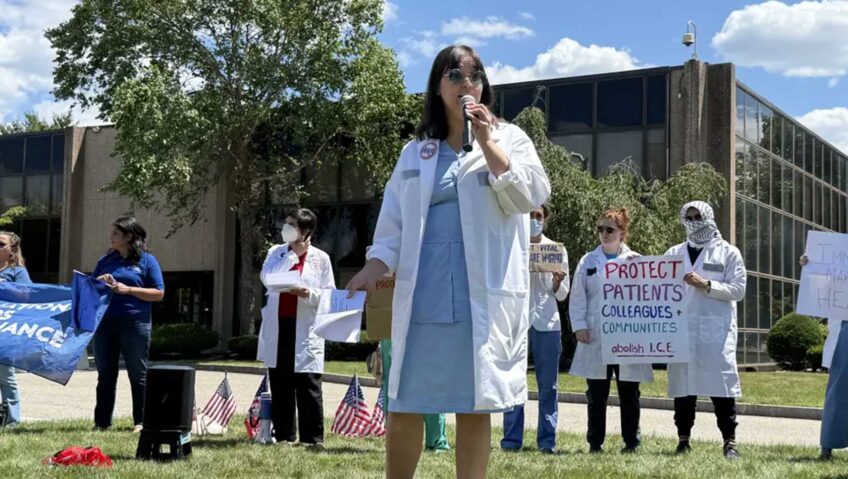
The first time Monique Wells saw Paris was in 1989, at age 28, on a European trip with her Zeta Phi Beta sorority sisters. Although the sojourn was brief, her attachment to the City of Light was immediate.
“I knew I would return,” she said.
Three years later, the French-American pharmaceutical company Rhone-Poulenc Rorer (RPR) invited her to join the company in Paris as a veterinary pathologist. Wells and her husband, Tom, a cost control analyst, packed up and moved from California. The company acquired her working papers, located an apartment for them in Paris’ 5th arrondissement and provided French lessons. And so, they began a new life in Paris, a dream come true for Wells.
As an undergraduate at the University of Pennsylvania, Wells had majored in biology, with a minor in French. That foundation, combined with an extended stint with the Alliance Française East Bay, the lessons provided by her new company and her immersion in Parisian life, helped her become comfortable in conversation. She began to navigate her new position at work as well as in the streets and markets of her new city, she says, “speaking a language I love.”
With a doctorate in veterinary medicine, also from Penn, a master’s degree in veterinary pathobiology from the Ohio State University and several years as the only pathologist employed by Chevron, Wells was uniquely prepared for major industrial posts worldwide. In 1998, after six years at RPR, she was hired by L’Oréal Cosmetics, where again she was the only pathologist in the company. In 2002, she left L’Oréal to form her own toxicologic pathology consultancy, with the support of a French government program offered to start businesses.
While she was working at L’Oréal, Wells’ interests took a turn, and she began researching the history of African Americans in Paris. With her husband, she formed the company Discover Paris!, which first offered self-guided tours of locations associated with African Americans in Paris. This led to her discovery, in the pauper’s division of a cemetery outside Paris, of the unmarked grave of the distinguished artist Beauford Delaney, an American modernist painter well known for his work with the Harlem Renaissance in the 1930s and ’40s. Delaney’s abstract expressionist paintings, created after he moved to Paris in 1953, have drawn critical acclaim. Fascinated with his story, Wells founded Les Amis de Beauford Delaney, and raised funds for a tombstone to mark his grave. In 2016, she organized a major exhibition of 40 original Delaney paintings and works on paper at Reid Hall, Columbia University’s Paris outpost.
Discover Paris!
Through Discover Paris!, which is now called Entrée to Black Paris, she created Afro-centric itineraries, self-guided African American history walking tours, and Black Paris bus tours. She has also hosted culinary events for tourists, including private wine tastings and cooking classes featuring Créole cuisine. Her book, “Paris Reflections: Walks Through African-American Paris,” (co-authored with Christiann Anderson), describes the walks organized for Discover Paris! clients. Wells’ numerous articles about aspects of life in Paris have appeared in The International Herald Tribune, San Francisco Chronicle, France Today, This City Paris, and other newspapers, magazines and web publications.
Wells attributes her inclusion of the culinary arts in her project to her family’s Creole Louisiana background, where cooking is an essential part of life. Her book, “Food for the Soul: A Texas Expatriate Nurtures her Culinary Roots in Paris,” sponsored by Michelin-star chef Alain Ducasse and published in 2000, is a fusion of Texas and southern Louisiana family recipes, information about the origins of classic soul food ingredients, and discussion of substitutes for ingredients that are not available in Paris.
As the U.S. delegate of the French organization called l’Académie de l’Art Culinaire du Monde Créole (Academy of Culinary Art for the Creole World), Wells facilitates the introduction of Americans to the wide variety of Creole cuisines around the world. Recently, she delivered a food blogging course and organized Creole cooking classes on video for culinary high school students at Marion P. Thomas Charter School in Newark, New Jersey. Wells was introduced to the school after meeting its co-founder and CEO Emerita, Karen Thomas, in Paris.
For visitors looking for an African American community in Paris, there is no longer a specific site like the legendary Chez Haynes restaurant in the 9th arrondissement. Wells, however, feels there is a true community of African Americans, in that “we know where we are, and how and when to reach out.” U.S. Embassy events, in previous administrations, brought African American expats together, and Wells would like to see this tradition reinstated. Her personal circle of friends in Paris consists largely of African Americans.
Resisting the notion that France is colorblind, she insists that Paris is not a racial haven. Despite that, Wells continues to love Paris. For her, it is a pedestrian-friendly city of little villages, with excellent public transportation and exquisite architecture. It is a place where people “take time for life,” she says, where people appreciate the importance of daily living. She has both U.S. and French citizenship, and although she describes herself as “American through and through,” she says, “I feel I was born to be here.” She and her husband live on Paris’ Left Bank in the 5th arrondissement.
An intermittent project:
Blacks in Paris
By Melvin B. Miller
Over the past century, American Blacks have found sophisticated Paris life to be appealing. It was indeed comforting to live in a place where the citizenry was unconcerned about the physical appearance of others. But the absence of racial discrimination was not the only attraction. The ambiance of the City of Lights inspired the arts as well as intellectual pursuits.
One of the earliest emigrants to Paris was Meta Warrick Fuller, the renowned sculptor who went to Paris to study with Auguste Rodin. She then moved to Framingham, Massachusetts, where she worked on commissions, raised her family and informed other artists of the value of study in Paris. The painter Lois Mailou Jones, who was born in Boston but became a prominent member of the Harlem Renaissance, did some of her best work in Paris upon following Fuller’s advice.
Prominent among writers were Richard Wright, one of the first Black novelists to write a bestseller, entitled “Native Son,” and James Baldwin, who became internationally successful. During the Civil Rights Movement of the 1950s, Black activists would emigrate to Paris to take a respite from the conflict. There was a Left Bank café where the emigrés and their Parisian friends could often be found.
A habitué of the café was Ollie Harrington, who had a most unusual background. He was the first cartoonist for the Black press. He created the cartoon character “Bootsie.” Harrington’s stories on journalism and race as he held forth at the cafe undoubtedly generated my interest in the press that led to the establishment of the Bay State Banner.
Everyone will concede that the Black American with the greatest impact on France was Josephine Baker, who was the star of the Folies Bergère. She died in 1975 at the age of 68 after an illustrious career in the theatre in France.
One of the books influenced by Baker’s life is “The Spirit of Josephine” by Florence Ladd. The Banner has arranged for Ladd, a Cambridge, Massachusetts luminary who is presently in Paris on personal business, to provide stories for the Banner from time to time about the present Black emigrés there, particularly those from the Boston area. It will be of interest to learn whether Paris has retained for American Blacks the glamour of the mid-20th century.







